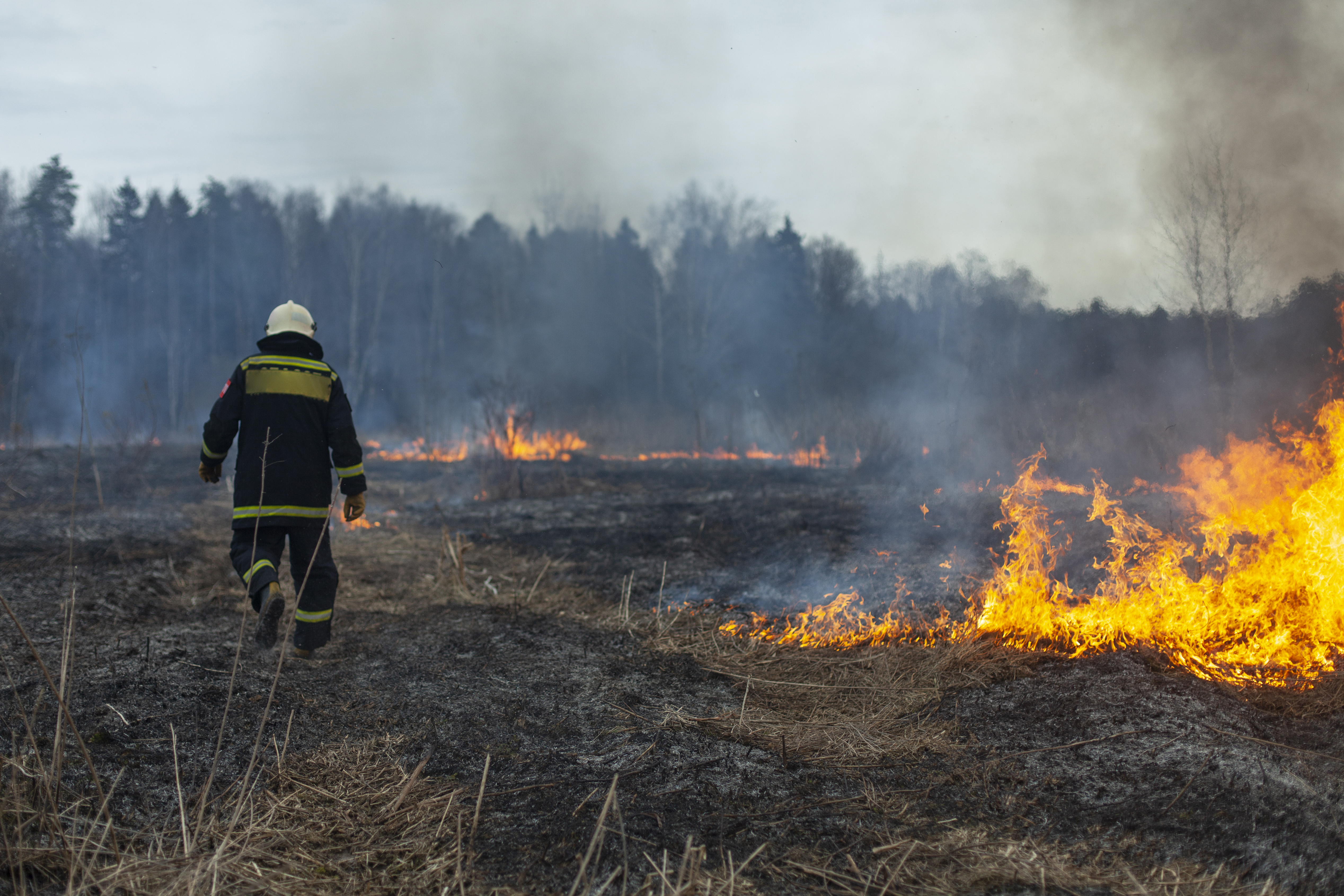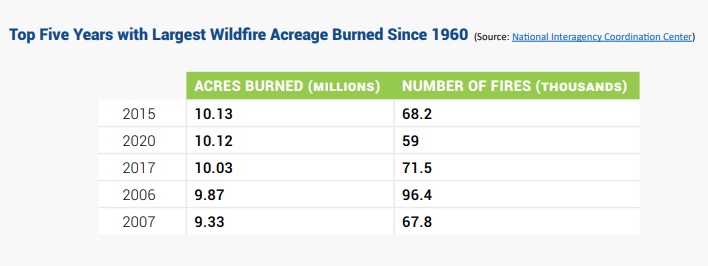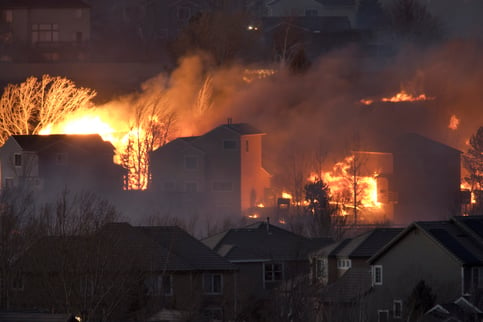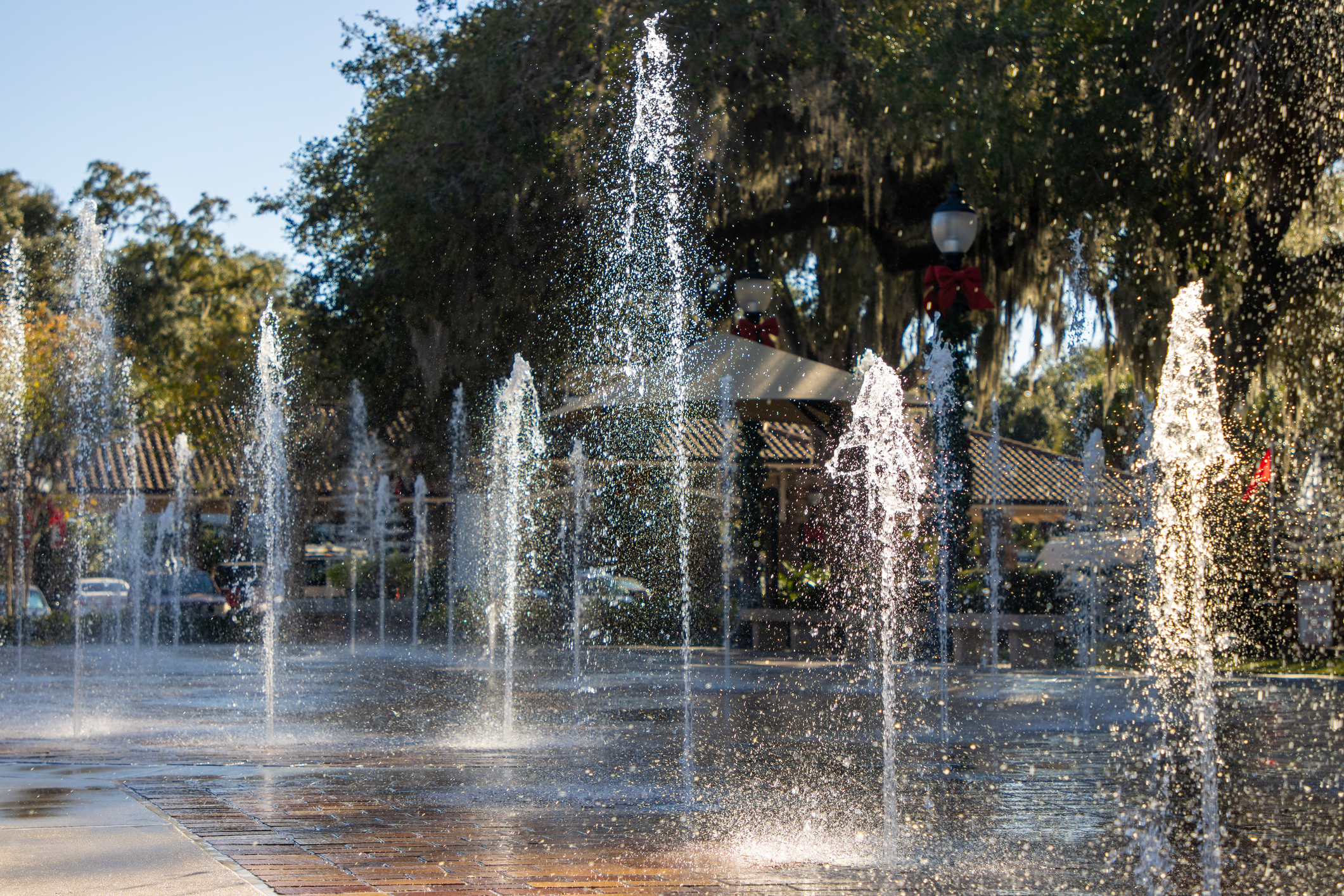Wildfire Awareness: How To Prepare for and Respond to Uncontrolled Fires

Wildfires are unplanned and uncontrolled fires that burn in natural areas but can spread quickly and devastate communities. They often begin unnoticed and spread quickly in dry conditions.
Since 2000, state and federal agencies have documented an average of 70,600 wildfires per year. While on average, there were more fires per year in the 1990s (78,600 per year), wildfires since 2000 have burned more land—an average of 7 million acres per year compared to 3.3 million acres per year in the 1990s.
About 90 percent of U.S. wildfires are human-caused, resulting from unattended campfires, downed power lines, burning debris, equipment use/malfunctions, discarded cigarettes, and arson. Wildfires are also caused by nature through lightning and lava. A fire only needs three elements to burn, known as the fire triangle: fuel, oxygen, and a heat source. Dry weather and drought turn green vegetation into fuel. Strong winds spread fires over a large area, while warm air encourages combustion.

A larger percentage of the U.S. population now resides within wildfire danger areas—more than 72,000 U.S. communities are at risk. States with the most wildfire risk include California, Texas, Oregon, Arizona, Washington, Montana, Colorado, Wyoming, Utah, Idaho, and Nevada. Wildfires can be destructive to humans, but they play an important role in nature. They burn dead matter and return nutrients to the soil. They also remove diseased plants and insects from the ecosystem. By burning through thick vegetation, wildfires allow sunlight to reach the forest floor, enabling new growth.
Preparing for a wildfire
Wildfires can occur year-round but are most prevalent in the dry summer season. Take steps to minimize your wildfire risk and
prepare staff and residents in case of a wildfire emergency.
- Research the frequency and risk of wildfires in your area.
- Review your organization’s business continuity plan to identify vital operations, points of contact (e.g., federal and nonprofit disaster relief organizations, utility companies, and emergency responders), and staff roles and responsibilities during a wildfire emergency. If you don’t have a business continuity plan, you can create one using our custom tool (please note, you must have an HAI Group member login to access this tool).
- Conduct tabletop exercises and emergency evacuation drills.
- Clear leaves and other debris from gutters, eaves, porches, and decks.
- Remove dead vegetation and flammable materials from within 30 feet of buildings.
- Create fuel breaks with driveways, walkways/paths, patios, and decks.
- Keep lawns hydrated and mowed to a height of 4 inches. Dispose of debris and lawn cuttings.
- Maintain a minimum of 18 feet between tree crowns within 30 feet of a structure. A mature tree canopy (a collection of tree crowns) should be no closer than 10 feet from the edge of a structure.
- Ensure all smoke and carbon monoxide detectors are working properly.
- Collect emergency building and survival materials such as insurance documents, respirators, shovels, flashlights, batteries, battery-powered radios, and first-aid kits. Urge residents to build an emergency preparedness kit.
During a wildfire
When a wildfire poses a threat to any of your properties, a top priority is staying informed so your organization can quickly alter plans as conditions shift.
- Pay close attention to emergency information and alerts.
- If authorities issue an evacuation order, ensure staff and residents are aware and follow the order immediately.
- Close building openings to prevent embers from entering (e.g., vents, windows, garage doors).
- If N95 respirators aren’t available, set up one or multiple rooms with a portable air cleaner or filter to make sure clean air is available for staff and residents, even when it’s smoky in the rest of the building and outdoors.
- Use high-efficiency filters in your central air conditioning system to capture fine particles from smoke. If your
system has a fresh air intake, set the system to recirculate and close the outdoor intake damper. Provide staff and residents with N95 respirators to prevent smoke inhalation if there are enough available. Cloth, surgical, and dust masks don’t prevent smoke inhalation.
- If N95 respirators aren’t available, set up one or multiple rooms with a portable air cleaner or filter to make sure clean air is available for staff and residents, even when it’s smoky in the rest of the building and outdoors.
- Turn off utilities such as gas if there’s time to do so safely.
- Fill large containers with water and place them around the property. These serve as water reservoirs.
After a wildfire

Use caution, as hot ashes, charred trees, smoldering debris, and live embers can remain after a wildfire. The ground may contain heat pockets that can burn staff and residents or cause another fire.
- Stay in touch with local authorities and wait for instructions. Be aware that emergency hotlines may be backed up due to
high call volume. - Once given approval by authorities, execute return procedures for staff and residents. If feasible, engage with residents
through video or phone calls to provide updates on the property. - When it’s safe to do so, document any damage to your property with photographs to assist in filing an insurance claim.
Contact our Risk Control and Consulting team for more resources and answers to your housing organization’s risk-related questions.
Includes copyrighted material from a company under the HAI Group family, with its permission. This guide is for informational purposes only and is not meant to provide legal advice. Our purpose is to provide an overview of legal compliance, and our recommendation is to play it safe and consult with legal counsel or a compliance advisor who is familiar with the laws in your area.




